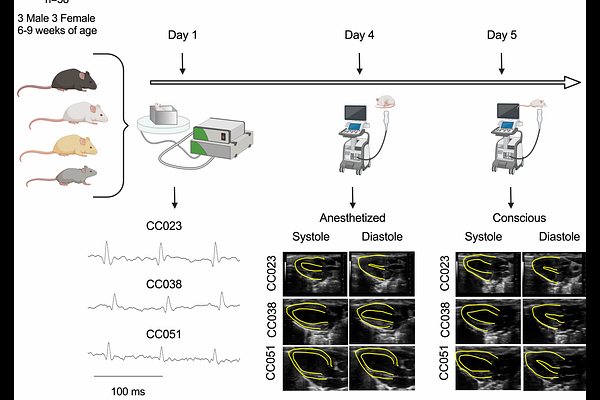Derivation of cardiac reference ranges for Mus musculus using the Collaborative Cross and identification of new cardiac models

Derivation of cardiac reference ranges for Mus musculus using the Collaborative Cross and identification of new cardiac models
Threadgill, D. W.; Popp, J. L.; Patel, K.; Cuomo, D.; Lynch, R. M.; Leung, S. W.; Berridge, B. R.; Rusyn, I.; Chiu, W. A.
AbstractContemporary approaches for developing interventions and assessing pre-clinical cardiovascular risk frequently utilize animal and in vitro models. However, these models currently lack normal species-specific reference ranges similar to what exists for humans. The genetically diverse Collaborative Cross (CC) population that models human genetic heterogenetiety was characterized to develop mouse-specific cardiac reference ranges for Mus muscuslus, the most commonly used pre-clincial model. Heart function was analyzed in males and females from 58 CC strains and C57BL/6J using high-frequency ultrasound under both conscious and anesthetized conditions, as well as conscious electrocardiography to develop two standard deviation-based reference ranges. The sources and magnitude of measurement variability were identified, and inter-laboratory comparisons determined to quantify phenotypic robustness and heritability. Strain was the largest source of variability, while laboratory where data were collected was also significant but sex was not. Additionally, strains were identified that have characteristics of disease-associated phenotypes in cardiac function and electrophysiology similar to human cases including dilated cardiomyopathy, systolic cardiomyopathy, cancer therapy-related cardiac dysfunction, and long QT. These new models allow a more natural, and therefore more translatable progession to a cardiac disease state, supporting development of strain-specific models for cardiac pathologies, ultimately allowing more accurate diagnoses and informative safety assessments in humans.